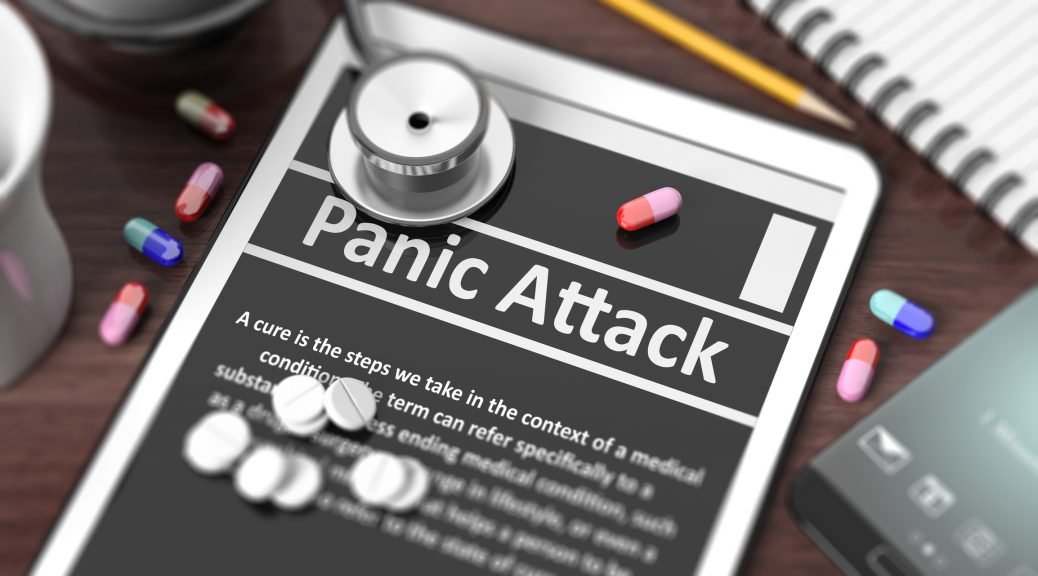Panic Disorder Medications: An Overview
Researchers and clinicians have found that the most effective panic disorder medications include the tricyclic antidepressants (see depression medications: tricyclic), monoamine oxidase inhibitors (see depression medications: MAOI’s), benzodiazepines (see anxiety medications), and the selective serotonin reuptake inhibitors (see depression medications: SSRI’s). These medications all have similar effects on panic disorder, although some doctors conclude that the SSRI’s tend to be a little more effective over the long-term. These medications do differ in relation to their side effects and also their contraindications, which are other medications and food that they may interact poorly with. Some have anticholinergic effects which include such side effects as dry mouth and blurred vision, which seem to be more common with the tricyclic antidepressants. These medications are also contraindicated for people with comorbid cardiac disorders. There are also significant dietary restrictions when using the MAOI’s in which you may be asked to abstain from any foods containing tyramine. The benzodiazepines may cause sedation and impairment in motor coordination as well as have some addictive qualities and a tendency to develop a tolerance to the medications. Obviously, panic disorder medications include several choices but also include a variety of side effects and negative interactions with other medications and foods and require careful consideration by both patients and doctors.
Panic Disorder Medications: Are the SSRI’s really the best choice?
Many doctors have concluded that when looking at both the efficacy and side effects, selective serotonin reuptake inhibitors (SSRI’s) may be the most promising choice for panic attacks and panic disorder. But like all medications, SSRI’s have side effects also that may make them unappealing, such as you may feel a short-term increase in arousal-related sensations. To assist with this however, SSRI’s may be started at a very low dosage (for e.g. 12.5 mg/d for sertraline; 5-10 mg./d for paroxetine) and then gradually increased (up to 25-200 mg/d for sertraline and up to 10-50 mg/d for paroxetine). The choice of a specific SSRI is based upon a variety of factors including personal preference and an individual’s history of response or nonresponse, and the related side effect profile.
What other medications are used in the treatment of panic disorder?
For some individuals who do not respond to SSRI’s or for any other reason, a combination of medications may be used for the treatment of panic disorder. One example may be when SSRI’s are combined with benzodiazepines. The benzodiazepines in this situation may be used to lessen the side effects of the SSRI’s. Despite some preliminary positive effects, this strategy has not been used often and may need to be more properly evaluated. Another alternative strategy may be to simply change the individual’s medication. The newer non-SSRI antidepressants may be considered such as gabapentin, bupropion, nefazodone or venlafaxine. The problem with using some of these newer medications is that there’s not as much clinical experience and research data to back up the use of the strategy. Some clinicians use benzodiazepines for panic disorder and panic attacks.
Panic Disorder and Use of Benzodiazepines:
Some of the primary drugs that have historically been marketed to treat anxiety and panic disorders have been the benzodiazepines. The name benzodiazepine is derived from its chemical structure. This medication changes the way the body handles chemical messengers in the brain. It connects to receptors in the brain that monitor your awareness level, coordination, memory, muscle tone and suppresses the electrochemical transmission of nerve impulses in the brain. The benzodiazepines are very serious medications that are capable of producing anything from mild to very serious sedation of the central nervous system. Sometimes they are referred to as “sedative hypnotics” in that they cause sedation and sometimes may cause the user to feel like even while they are awake, that their routine communication almost has the feel of being somewhat of a “hypnotic command.”
Another problem with benzodiazepines is that psychological and physical dependence can become a real concern for the future, as there is risk of dependence even after a relatively short period of use at their most common dosage levels. That is why these medications are considered to be controlled substances and are dispensed only in limited amounts, ideally for a short duration of time. Stopping these medications suddenly can cause serious withdrawal symptoms due to the feeling of dependency. Tolerance to these medications also is known to occur requiring increased amounts to get the same therapeutic benefit.
Panic Disorder Medications: A Summary
As should be fairly obvious, the use of a specific medication for the treatment of panic attacks and panic disorders, requires significant clinical judgment by a physician well aware of the benefits and side effects of each specific medication. At the present time, antidepressants (especially the SSRI’s) seem to be eclipsing somewhat the use of benzodiazepines for the long-term treatment of panic disorder and generalized anxiety disorder. Another approach to treatment of the drug refractory individual is to use a psychosocial treatment such as cognitive behavioral therapy as an adjunctive or alternative treatment to panic disorder medications.
Some information adapted by Paul Susic Ph.D. Licensed Psychologist from DSM/IV/TR Mental Disorders: Diagnosis, Etiology and Treatment by Michael B. First and Allen Tasman and the No-Nonsense Guide to Psychiatric Drugs by Moira Dolan



